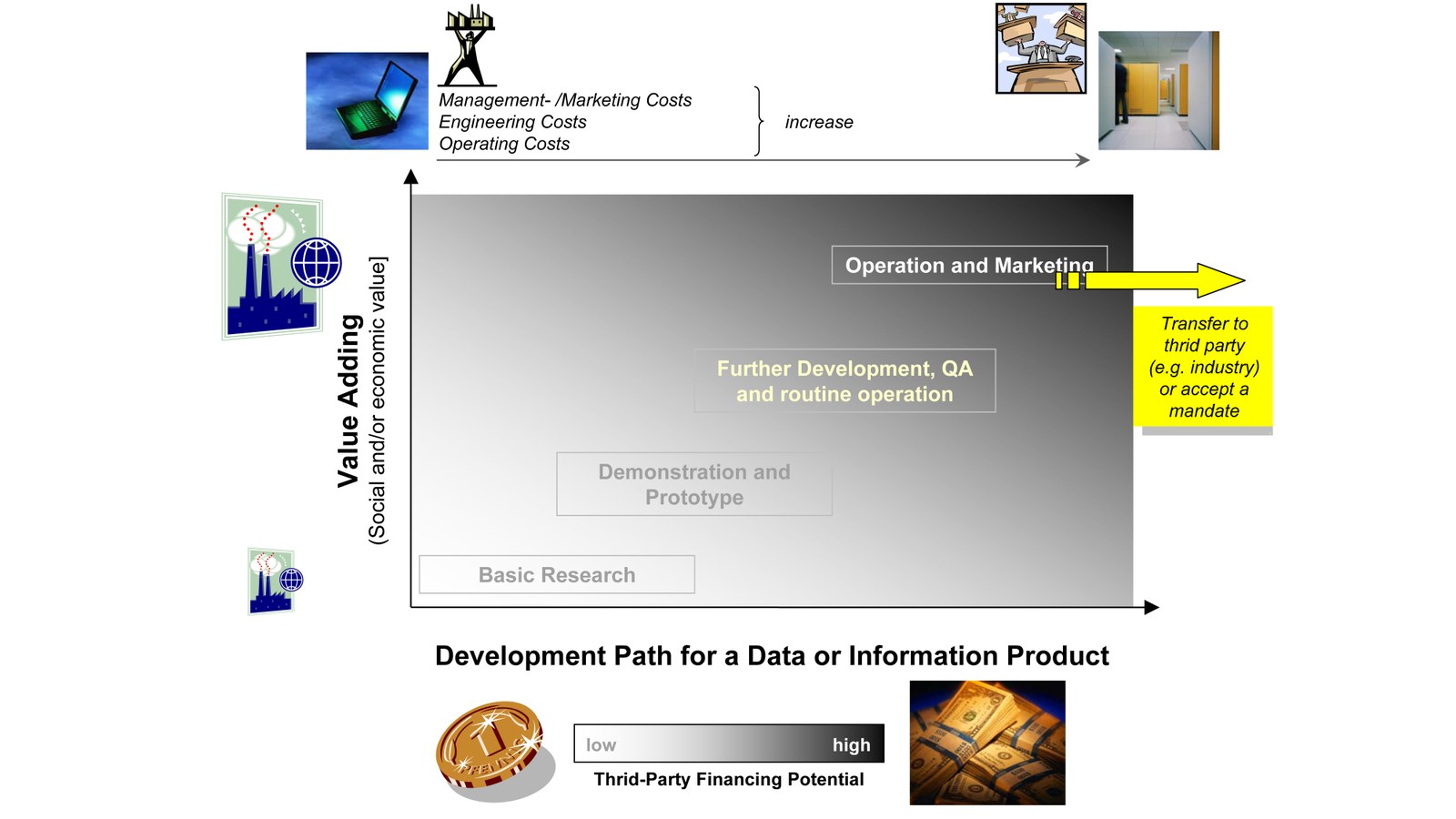Processors for Atmosphere Products
The data products which have been developed relating to the atmosphere are available via the World Data Center for Remote Sensing of the Atmosphere, WDC-RSAT, where detailed descriptions can also be found (see link at right).

The development path of a data or information product is summarized in the graphic. The process begins with identifying a data or information product for which there is a need but which is either unavailable or not of the desired quality at present. It is a question of identifying products in anticipation of market demand, either because the technological preconditions are not yet available or because demand will be a secondary effect of other future developments. This is a key matter which also has immediate consequences for the competitiveness of the department. After identifying this kind of new product the goal is then to develop a demonstrator or prototype. This may in some cases require basic research, should the fundamental insights required for realization not be at hand. During this phase the extent of in-house financing is typically high, and this is usually the point when a decision is made as to whether the development can be patented. The product is then defined and its architecture determined, if possible in close consultation with anticipated users. If the demonstration is successful, the next phase is further product development, drafting a quality assurance concept, and possibly automating the processing of the data or information product. In this phase the potential for third-party financing increases, and so this work frequently takes place in the context of third-party projects, and scientific publications and sometimes patents may result. In some cases the algorithms and methodologies which have been developed can also in principle be applied in quite different fields from the one for which they were originally designed (“diagonal technology transfer”). The next step involves those final developments which lead to a ready-to-use processing system or a computing-on-demand service .
The activities of public institutions, including DLR, must be undertaken for the public good, which excludes a profit-oriented approach. A system which has been developed to maturity is thus either handed over to an operator, whereby there may be licensing arrangements, or the department may itself operate the system if it receives a suitable mandate from the user or customer. Here the precondition would be some vested interested on the part of DLR. However, the involvement of the department usually ends with the demonstration of the product in question.
This concept gives rise to a number of implications for the department as to the allocating of its resources. Depending on its complexity, it takes up to five years to proceed through the entire development path for a data or information product. Whereas scientists are usually deeply involved in the first phase, their role later decreases as the information technology engagement steadily grows. At the same time the need for management and marketing activities increases. The primary consideration is always on the scientific and technological development, because growth will only lead to new opportunities and be sustainable if it is based on a solid foundation of expertise. Therefore, an effort is made to keep all management costs (including administrative and operational constituents) as low as possible.

The ideal profile of the staff of the department includes scientists from the natural sciences, mathematics and informatics. Since the data and information products frequently require expertise from various areas, and sometimes also involve external specialists, more or less pronounced interdisciplinary collaboration is essential, depending on the product line in question. This situation compels the participating staff also to have the requisite amount of communication skills and the ability to work in a team.
